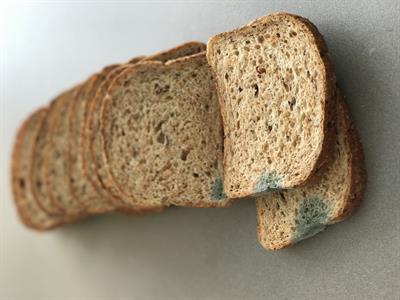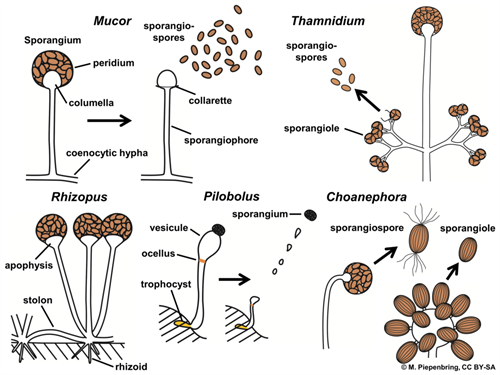PDF chapter test TRY NOW
Spore formation:
If a wet slice of bread is left out in a cool, moist and dark place, it will develop a light hairy growth on its surface. This hairy growth is known as bread mould (a type of fungus). The fungus (Rhizopus) is blown around by the wind and will ultimately reach the bread's surface. Once the spore has found the surface of the bread, it will begin to consume the nutrients and moisture in order to grow.

Growth of mould on bread
What are spores?

Spore formation in Rhizopus
Spores (found in the air) are little spherical bodies with a thick protective shell that shields them from the elements. The spores germinate and develop into new plants when the conditions are favourable.
Important!
A sporangium originates from the fungal hypha during spore production.
Reference:
https://www.flickr.com/photos/lynnfriedman/34296658593/in/photostream/
https://upload.wikimedia.org/wikipedia/commons/thumb/5/5f/06_05_sporangiophores%2C_sporangia%2C_conidia%2C_liberation_of_spores%2C_Mucorales%2C_Zygomycota_%28M._Piepenbring%29.png/1024px-06_05_sporangiophores%2C_sporangia%2C_conidia%2C_liberation_of_spores%2C_Mucorales%2C_Zygomycota_%28M._Piepenbring%29.png
